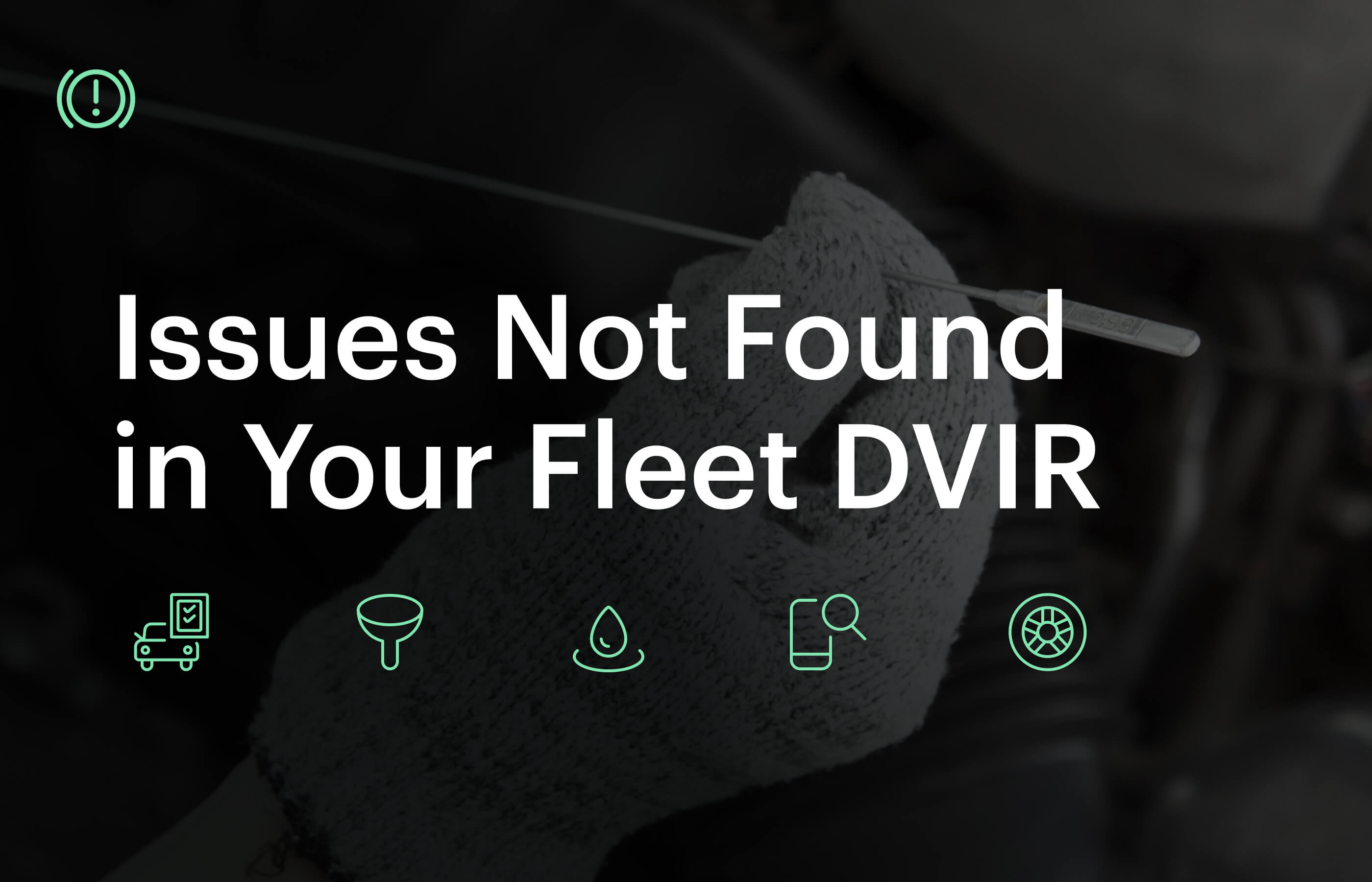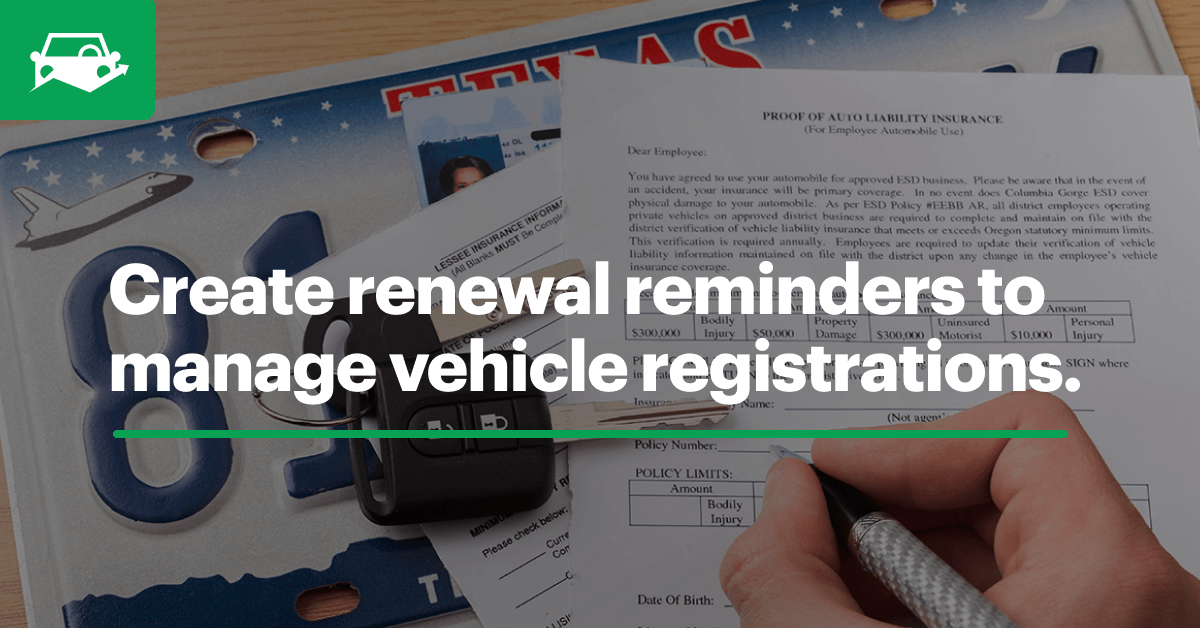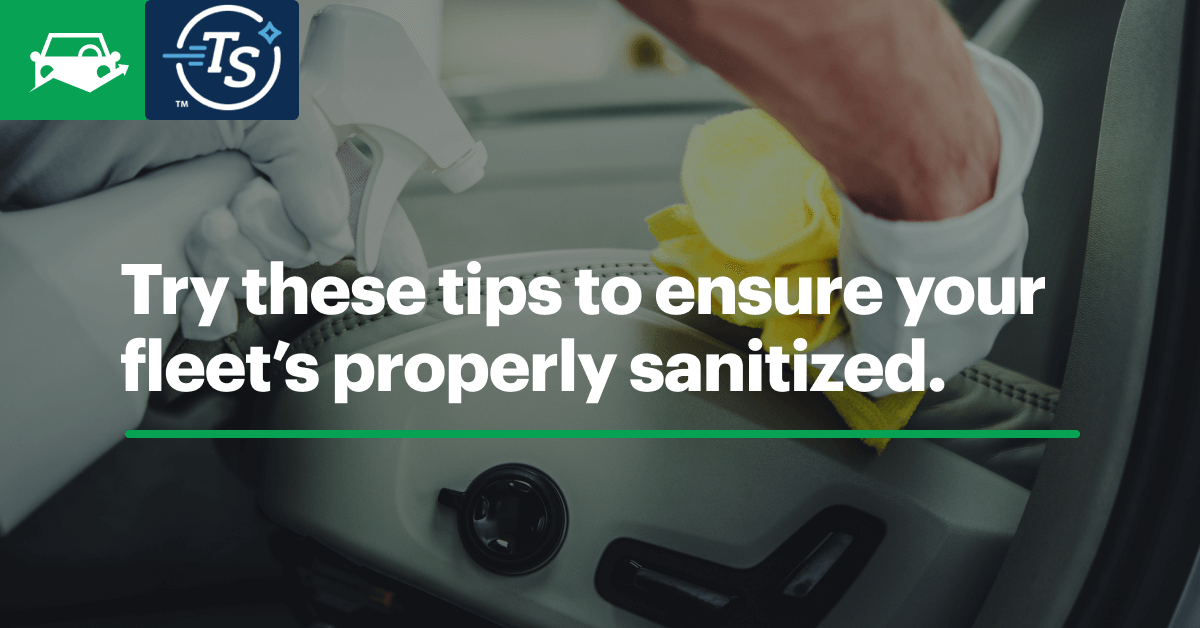Daily Driver Vehicle Inspection Reports (DVIR) are required for all commercial fleets. They help provide insight into the health of your assets, as long as operators are looking (and smelling) for the right things.

Rely on Your (Spidey) Senses When Inspecting
Even if you managed to create a thorough list of items to review and added them to your DVIR, things can be overlooked. Once more, something might seem fine after a pre-trip inspection but after a full days wear and tear, new issues could arise.
To combat this, your operators need to be alert for anything that might be out of the ordinary during their shift.
Here are some issues you should consider adding to your pre and post-trip inspection checklists.
(Hint, rely on your senses — and they don’t have to be spidey)
- Smell for Funk
Funk is best left on the dance floor. If your operators smell something funky coming from the vehicle, be certain the issue is recorded in the DVIR. Immediate maintenance action might be required to prevent downtime.
Smells that operators should be on the hunt for include:
Syrup - Unless your operator stopped by IHOP for a bite and forgot the leftover container in the cabin, the smell of syrup could be an indicator that the vehicle is leaking coolant.
Rotten eggs - Keeping with the breakfast theme, a rotten egg smell might mean an issue with the catalytic converter or a damaged fuel filter.
Burnt rubber - One might assume that this is tire related, but that is not always the case. In fact, it’s more likely a signal that an engine hose or belt is overheating. Of course, if you just did a burnout, it could be tire-related.
Vinegar - It can be a great solution for cleaning, but the smell of vinegar shouldn’t be coming from your vehicles. If it’s coming from the air conditioning vents, it could be an issue with mold or debris build-up.
Gasoline - If your operator didn’t fuel up recently and smells gasoline, it’s possible there is a leak in the fuel tank. While all of these signals should be addressed as soon as possible, gas leaks require immediate attention due to its flammable nature.
- Look for Leaks
Leaks can be a signal of several issues. Some of which are not as serious as the others. The most common leaks are coolant, oil, power steering, brake and transmission fluid.
Coolant - Can be a variety of colors (depending on vehicle manufacturer) is required to prevent vehicles from overheating. Under the hood, coolant tanks have high and low indicators on them to identify levels.
If the level is low and there’s a noticeable leak, it could be an issue with the hoses or even the radiator. Do not drive your vehicle for any period of time if it has low coolant levels as it can overheat the engine.
Oil - Its leaks are easier to identify. Most motor or engine oils are a brownish, amber color. Usually darker oil is a sign that it’s time for an oil and filter change.
Unlike other fluids, engine oil could leak from any number of places. Hopefully, your operator can identify where the leak is coming from, but if it’s not easily identifiable, find an auto care expert to look at the vehicle sooner rather than later.
Brake fluid - It has a lower viscosity than oil and other fluids. Therefore, a thinner liquid (that isn’t water) can be a brake fluid indicator. Leaks can be attributed to several sources. Some of the causes could be from the brake cylinders, calipers or hoses.
A significant loss in the brake fluid will be noticeable when driving. If you force the brake pedal down all the way to the floorboard without the vehicle slowing down much at all, chances are air is getting into the line due to the lack of fluid.
The worst-case scenario for a total loss of brake fluid is that the vehicle won’t slow down, putting operators at tremendous risk.
Power steering fluid - It can leak from several locations and won’t always be dripping onto the ground. The power steering pump, hose or the steering rack are a few places where the leak could occur.
Since the steering rack is close to the ground and exposed to the elements it easily collects gunk and grime. Consider cleaning the rack and identify if the fluid is, in fact, leaking onto it.
Similar to a loss in brake fluid, a lack of power steering fluid will have a noticeable impact when driving. At lower speeds, the vehicle will be very difficult to maneuver in either direction. If this occurs, it’s time to seek professional assistance.
Transmission fluid - In an automatic vehicle it's typically a reddish color and can be more like engine oil in manual vehicles. Common transmission fluid leaks occur with the pan and gasket.
Some of the causes could be if the gasket is not sealed properly, damaged or the pan is punctured. A small leak is manageable for short distances but should be addressed quickly to avoid a larger issue.
Make sure operators indicate the leaking fluid’s color in the DVIR. This way you can determine what fluid is leaking and how to best address it.
- Listen for Clunks, Clangs and Screeches
Although they won’t be found until the vehicle is taken out for a spin, abnormal sounds can be a great indicator of an issue.
Tires - Can make many sounds due in large part to the fact they are in constant contact with the ground. Some noises could simply be caused by road conditions. Meanwhile, others are a signal that it’s time for maintenance.
A familiar sound that is heard coming from tires is a “womp” or small thuds. Usually, this is the case of a worn-out tire with eroding tread.
Wheels can also make distinct warning sounds. If you hear a thumping noise and sense some shaking, chances are there’s an issue with your alignment.
Find out what you should be looking for when inspecting tires.
Brake pads and rotors - Make very distinct sounds that set them apart. Screeching and grinding are two alarm signals from your brakes.
If operators notice a screeching sound when they apply the brakes, then it’s typically a sign that the brake pads are worn out and need to be replaced.
If a grinding sound is present, then it could mean the rotors have been compromised. This is a more costly fix compared to replacing the pads, further emphasizing the need to take action sooner rather than later before issues compound.
Engine - Squealing is a loud and rather annoying sound that is usually attributed to an issue with a belt. Like many issues though, it can be tough to pinpoint exactly because different people have different interpretations of a sound.
That said, it’s best to seek professional advice and have a technician take a closer look at your vehicle.
Increase Efficiency With Electronic DVIR
A basic DVIR form has a checklist of items to review to ensure there are no issues with an asset. Operators conduct both pre and post-trip inspections and issues can easily be overlooked, especially if you’re using paper DVIR.
On the other hand, electronic DVIR forms (eDVIR) offer a variety of benefits. Traditional DVIR forms have a basic checklist with a small margin to scribble down notes.
Meanwhile, eDVIR offer great flexibility and customization. A mixture of assets comprises a fleet, each with a necessary function. Due to this, there isn’t a one-size-fits-all inspection form.
Unlike paper DVIR that have preset items, eDVIR can be customized to fit your fleet’s needs. If your fleet is comprised of a mix of trucks and heavy equipment, you can create separate digital inspection forms tailored to the asset.
This promotes a more organized database while maximizing efficiencies by eliminating wasted time with inspection matters that are not relevant.
Learn how Fleetio can help keep your fleet running and costs down. Start your free trial or request a demo with one of our experts today!



